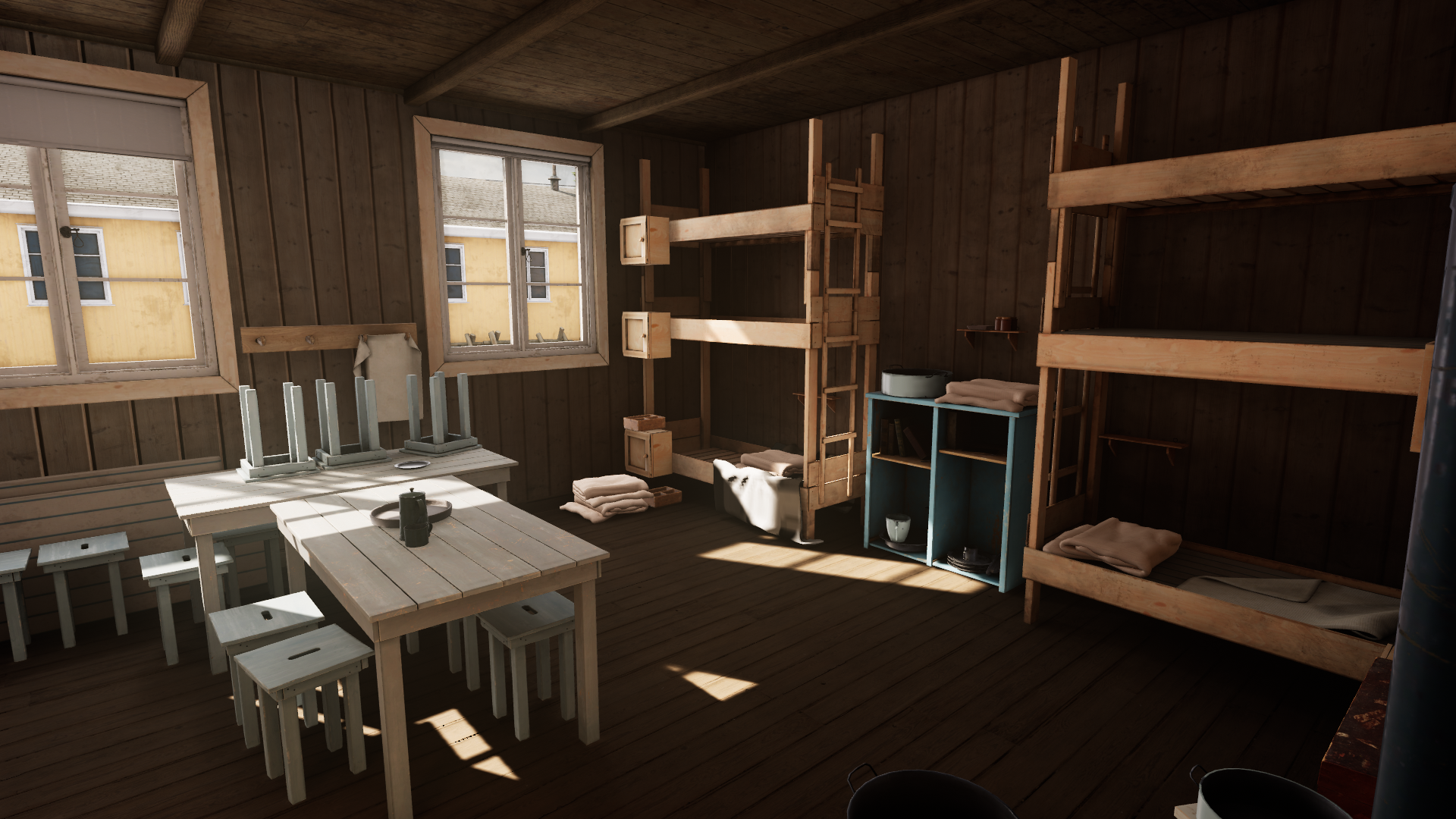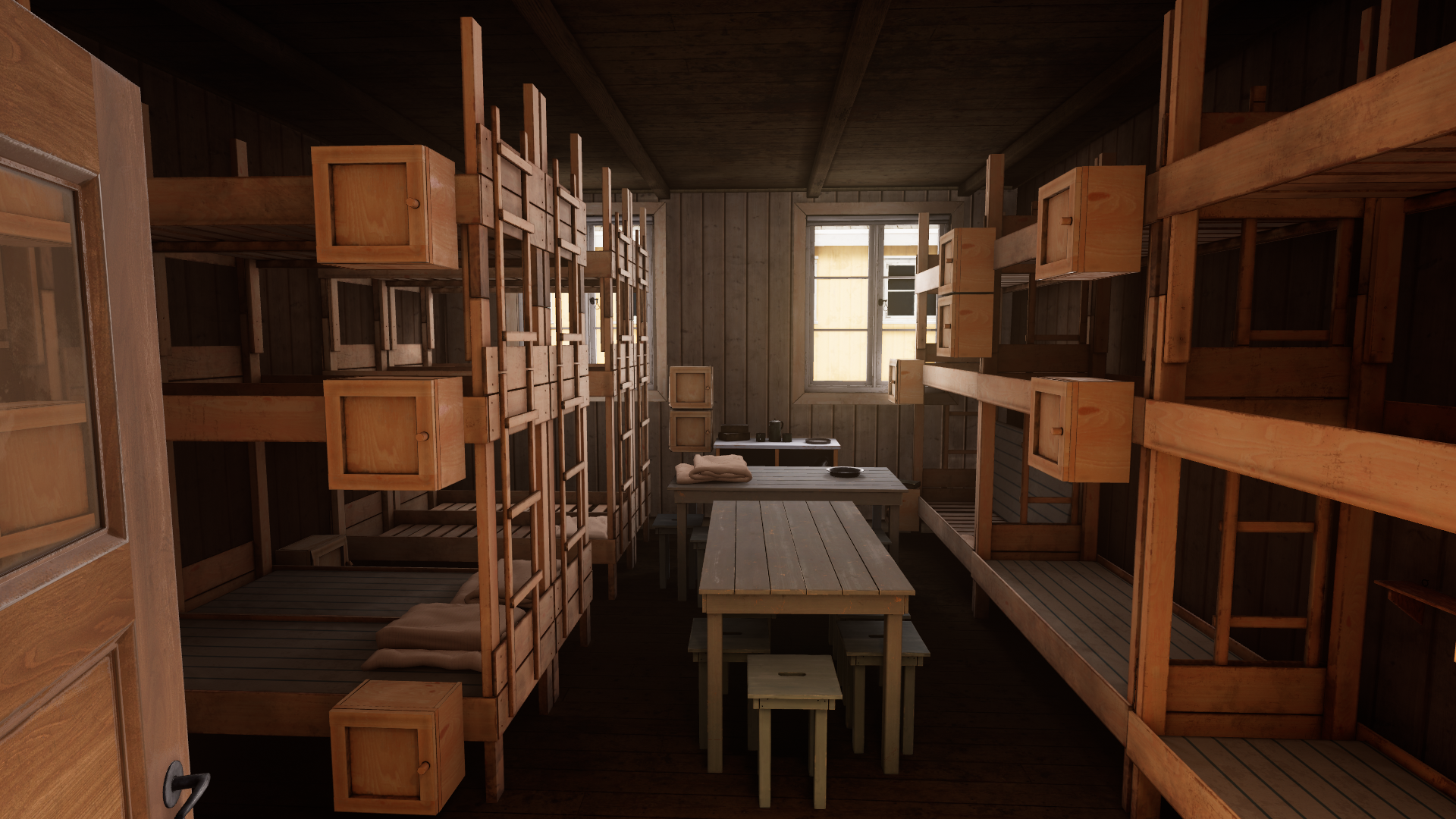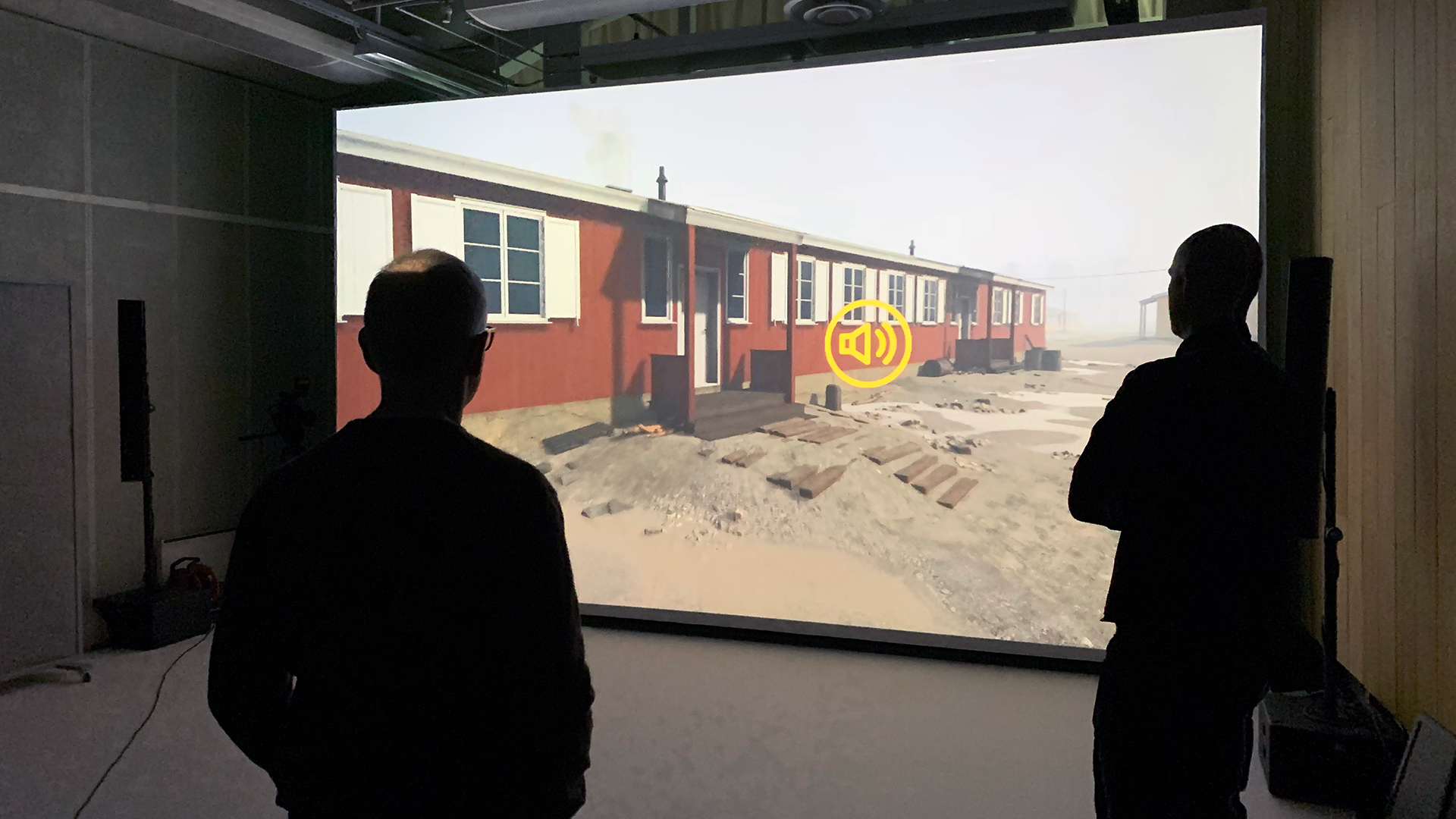











Grini was the largest German detention camp in Norway during the Second World War. Almost 20,000 prisoners were in captivity during the four years the camp existed and of these around 2,000 were women. Grini VR was a project that sought to visualize what it would have looked like at the end of the war.

Grini was expanded continuously from the start of the war. Outside of the main camp, farm buildings can be seen where some of the prisoners worked during their internment. Food shortages, fear of ill-treatment and deportation to Germany were constant threats to the prisoners at all times and were part of everyday life. At the end of the war, there were almost 5,500 prisoners in the camp, of which 600 were women.

Today, almost nothing remains of the detention camp. An electrical fence post, and one of the barracks turned into a museum, are the only physical artifacts on site. The main prison building from the era is a modern prison today and as such off limits to the public.

Achtung! Every morning and every evening, thousands of prisoners lined up at the roll call area named appellplatz in German. It was a large open space roughly in the middle of the camp and was used to check that the number of prisoners matched the camp's prisoner registers, and to give messages from the camp management.

The appellplatz was also used as punishment, intimidation and humiliation. Appeals could last for several hours. Standing straight up and down for hour after hour, without knowing how long it would last or what would happen, was a great physical and mental strain.
Photo by Fanny Wikborg / Oslo Museum

As the number of prisoners increased and new prison barracks were built, latrines or outhouses also had to be constructed. These were large, long buildings which in German were called "abort-baracken", thus it became known as "going to the abortion" when the prisoners had to relieve themselves.

Grini's own youth department - Jugendabteilung - was established in the spring of 1943 to look after and nazify the youngest male prisoners. It was housed here in barrack number 4.

The barracks contained a number of rooms where the prisoners slept, cooked their meals and spent most of the little spare time they were allowed.

As the prisoner population grew, more beds were added to the rooms. There was simply not enough space for everyone meaning some people had to sleep on mattresses on the floor or on wood boards laid on top of the tables.

Building an accurate VR model of the Grini detention camp required combining hand drawn site plans of the camp with documentary photographs and digital 3D maps of the current terrain and buildings.

Grini VR was created as a collaboration between the Grini Museum, The Cultural Schoolbag Viken and the Art Lab at Kulturtanken where I worked as a senior advisor in addition to heading up the Art Lab. The VR experience was created by freelance tech artist Kjetil Hjeldnes, with sound design by Sølve Huse-Amundsen, additional support by Boris Kourtoukov and myself as Creative Producer.